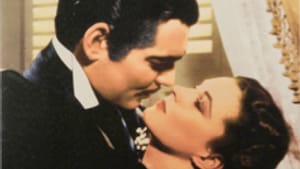Stay in the Loop
BSR publishes on a weekly schedule, with an email newsletter every Wednesday and Thursday morning. There’s no paywall, and subscribing is always free.
It was a very good year in Hollywood: What today's movies could learn from 1939
What Hollywood could learn from 1939

The Academy Awards committee recently increased the number of Oscar nominees for "Best Film" from five to ten. Which got me to thinking:
Seventy years ago, the world was a very different place, a place to which most of us would rightly say, "Good riddance. In 1939 America was barely beginning to emerge from the Great Depression. Gas was ten cents a gallon, but there were no Interstate highways to drive on. A house could be bought for $3,800, but that was two years' pay for most Americans. Blacks and women were relegated to second-class citizenship in a society run by white men. The Republic of Spain gave way to the dictatorship of Franco. Hitler invaded Poland, launching World War II.
Yet whatever disasters occurred elsewhere in 1939, Hollywood had an astonishing year. Here is a short list of the top movies released during those incredible 12 months:
- At The Circus
- Babes In Arms
- Beau Geste
- Confessions of a Nazi Spy
- Dark Victory
- Destry Rides Again
- Dodge City
- Drums Along the Mohawk
- The Four Feathers
- Golden Boy
- Gone With The Wind
- Goodbye Mr. Chips
- Gunga Din
- Gulliver's Travels
- Jesse James
- Juarez
- King Of The Underworld
- The Hound of the Baskervilles
- The Hunchback of Notre Dame
- Intermezzo
- Love Affair
- Mr. Smith Goes to Washington
- Ninotchka
- Of Mice and Men
- Only Angels Have Wings
- The Old Maid
- The Private Lives of Elizabeth and Essex
- The Roaring Twenties
- Stagecoach
- Stanley and Livingstone
- The Story of Irene and Vernon Castle
- Union Pacific
- The Wizard of Oz
- The Women
- Wuthering Heights
- You Can't Cheat an Honest Man
- Young Mr. Lincoln
Let us count the theories
Why were all of these great movies released in 1939? Theories abound, some of them economic (having recovered from the Great Depression, the studios started spending big money again), some political (all those talented Hungarians fleeing the Nazis) and some bizarre (the density of talent in Hollywood reached a critical point at which even mediocre movies were chockfull of incredibly talented artists).
The list of movies is generically diverse, from Civil War epic to fantasy. You'll find none of today's cookie-cutter "action-thrillers" or "animated classics." This diverse group includes four of the best movies in four major genres.
Gone With the Wind, with Clark Gable, Vivien Leigh, Leslie Howard, and Olivia de Havilland, set the standard for "big" movies made from a best seller.
The Wizard of Oz, with Judy Garland, Ray Bolger, Jack Haley and Bert Lahr, is perhaps the most popular movie ever made.
The Roaring Twenties, with James Cagney and Humphrey Bogart, was a gangster flick made when the movie public had been saturated with them for years.
Stagecoach introduced the previously outlandish notion of a major Western starring the young John Wayne"” surrounded, to be sure, by a stellar cast that included Thomas Mitchell, Clair Trevor, Andy Devine, John Carradine, Donald Meek, and an even longer list of talent behind the camera.
One vote made a movie
And that's what made all these movies great: the talent. Hollywood was really a big repertory company in 1939. The studios could call on more than 30,000 talented actors, writers, cinematographers, directors, composers, musicians, designers, technicians"” and producers.
And do you know what it took to make a great movie? One vote. That's the kind of power that studio bosses like L.B. Mayer and Jack Warner wielded.
What's more, anybody with a good idea was given a shot to make it work. Oz was made because Arthur Freed, a songwriter, convinced Mayer that M-G-M should bring to the screen the children's classics by L. Frank Baum.
Yet somehow the studio heads got reputations as a bunch of Philistines, who cared only about making money which they did, to be sure.
Today's committee system
Nowadays movies are made only after approval by a committee or two or three. It's the stars, or their agents, who decide which movies get made. There's much more freedom to portray sex, violence, cruelty, corruption, whatever. The industry abounds in "independent" films, actors who direct, directors who write and writers who produce. It's a much more open system. So far in 2009 the biggest films produced by this system are Star Trek, Up, Monsters vs. Aliens, X-Men Origins: Wolverine, Night at the Museum: Battle of the Smithsonian, Fast & Furious, The Hangover, Paul Blart: Mall Cop, Angels & Demons and Terminator Salvation. Last year's top ten are no better.
Yes, indeed, we'd better increase the number of "Best Picture" Oscar nominees to ten, or we'll have to overlook so many quality movies. Who says there's no such thing as progress?
Dumbing down audiences
So what does my comparison prove that the people who make movies got dumber or less talented? Maybe. And maybe the adolescent junk that has passed for film excellence in the past 30 years has played a part in dumbing down audiences, too. Will anyone still watch today's "classics" ten years from now, let alone 70?
I don't care how much the new movie mavens try to sell me, I refuse buy into their notion (promoted by the American Film Institute) that The Sixth Sense and Toy Story and Lord of the Rings are three of the 100 best movies of all time. They'd be hard pressed to make the top 100 of 1939.
If you disagree, check out Turner Classic Movies, which this month is broadcasting 39 films from that remarkable year. The proof isn't in the hype; it's on the screen.
Sign up for our newsletter
All of the week's new articles, all in one place. Sign up for the free weekly BSR newsletters, and don't miss a conversation.

 Armen Pandola
Armen Pandola